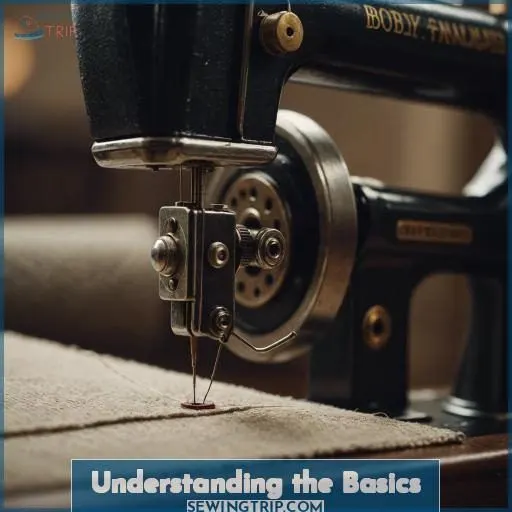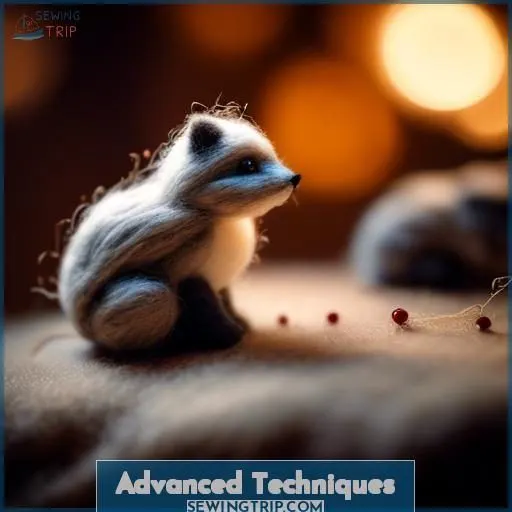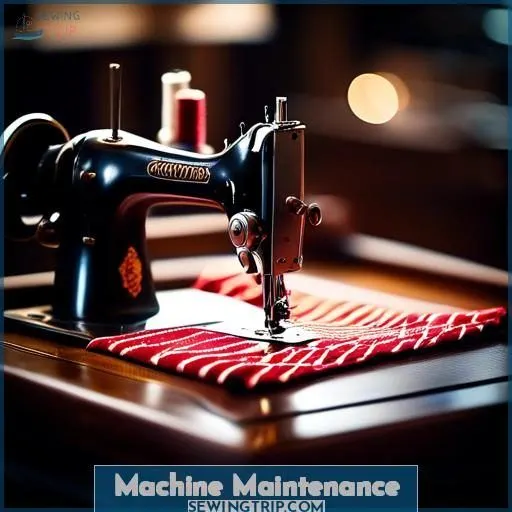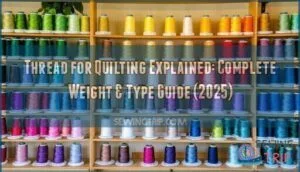This site is supported by our readers. We may earn a commission, at no cost to you, if you purchase through links.
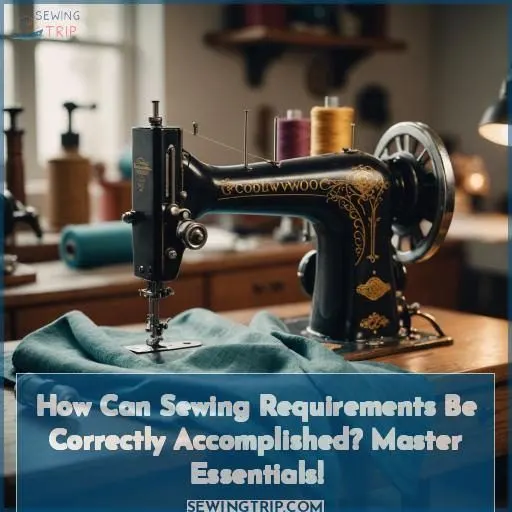 To correctly accomplish sewing requirements, you’ll need to master the essentials.
To correctly accomplish sewing requirements, you’ll need to master the essentials.
Start by understanding fabric preparation – cleansing, selecting suitable materials, and properly measuring before cutting.
Next, learn basic stitches like straight, zigzag, and backstitch, while adjusting tension settings for clean edges.
Don’t neglect machine maintenance – remove lint regularly, lubricate gears, replace needles, and have it serviced annually.
By taking care of your equipment and practicing fundamental techniques, you’ll be well-equipped to tackle more advanced sewing projects.
Proper positioning, stitch selection, and fabric handling mastery await those seeking greater skills.
Table Of Contents
Key Takeaways
- Understand fabric preparation, including cleaning, selecting suitable materials, and proper measuring before cutting.
- Master basic stitches like straight, zigzag, and backstitch, while adjusting tension settings for clean edges.
- Regularly maintain your sewing machine by removing lint, lubricating gears, replacing needles, and having it serviced annually.
- Practice advanced techniques such as needle positioning, fabric thickness, and stitch tension adjustment for high-quality results.
How Can Sewing Requirements Be Correctly Accomplished?
To accurately complete sewing requirements, follow these steps:
- Fabric Selection: Select a suitable fabric for the pattern and your project. Consider its composition, maintenance instructions, and compatibility with other fabrics. Pre-shrink the fabric and remove any surface treatments by laundering or dry cleaning.
- Pattern Selection: Choose a pattern design, then select an appropriate fabric. Some pattern designs require or restrict fabric choice.
- Sewing Machine Selection: For home projects, select a sewing machine that provides high-quality stitching, adjustable speed, and compatibility with various attachments. For industrial projects, consider factors like sewing quality, speed, budget, specialty, complexity, and warranty.
- Essential Sewing Supplies: Gather necessary sewing tools such as needles, thread, measuring tape, fray check, bodkins, point turner, basting tape, seam ripper, and a thimble.
- Precise Measurements: Use measuring tapes to take accurate measurements for cutting and pinning fabric.
- Sewing Pins: Use standard ball pins to hold pattern pieces together temporarily before sewing.
- Ironing: Iron the fabric before sewing to guarantee proper fabric layering and prepare the project for success.
Understanding the Basics
To fulfill sewing necessities appropriately, it’s crucial to comprehend the fundamentals.
Initiate with fabric preparation: cleanse or pretreat as necessary.
Select the suitable fabric for your project, considering needle compatibility.
Proceed to master elementary sewing techniques such as straight stitching, zigzag stitching, and backstitching.
Adjust tension settings for the fabric and opt for appropriate stitches.
Iron and press hems for a polished finish.
Always measure twice before cutting once.
With these foundational skills, you’re equipped to venture into more advanced techniques.
Advanced Techniques
To master advanced sewing techniques, consider these three essentials:
- Needle positioning: Make sure the needle is in the correct position for the stitch you’re using. This can affect the overall look and quality of your work.
- Fabric thickness: Keep in mind the thickness of your fabric. Thinner fabrics may require a different needle and stitch type.
- Stitch tension: Adjust the tension to suit the fabric and stitch type. Tight stitches can cause puckering, while loose stitches may not hold well.
Machine Maintenance
After mastering advanced techniques, maintaining your sewing machine in optimal condition is essential. Here’s how:
- Regular Lint Removal: Prevent thread accumulation by cleaning after every project. This simple step keeps your machine functioning smoothly.
- Lubrication and Needle Replacement: Oil its gears periodically and replace needles regularly to prevent snags and breaks.
- Appropriate Storage and Maintenance: Store your machine protected and have it serviced annually. Remember, a well-lubricated machine is your indispensable ally in sewing proficiency.
Frequently Asked Questions (FAQs)
What are the best materials for sewing?
Picture a graveyard for half-sewn creations, littered with limp fabric corpses. Avoid this macabre sight by using quality threads, needles, and fabrics—the undisputed MVPs for seamless sewing mastery.
How do I choose the right needle for my project?
You’ll want to match the needle to your fabric’s weight and fiber content. A sharp needle works best for woven fabrics, while a ballpoint prevents snagging on knits. Consult your machine’s manual or ask at your local sewing store for expert advice.
How do I fix a bobbin thread tangle?
Over 50% of bobbin woes stem from improper threading. Carefully re-thread the bobbin case, ensuring no loops or tangles remain. If issues persist, clean the hook race, adjust tension, and consider replacing the bobbin case – a fresh start often resolves stubborn snags.
What is the best way to handle sewing patterns?
Carefully trace patterns onto fabric, transferring all markings. Pin or baste pieces together, following grain lines. Use precise seam allowances and frequently check pattern instructions for proper construction techniques.
How do I prevent fabric from fraying?
Like a stealthy ninja, you can prevent fraying by applying fray check or seam sealant along the fabric edges. You’ll also want to finish seams with a zig-zag or overlock stitch for maximum protection.
Conclusion
Mastering sewing requirements is a journey where coincidence meets dedication. By understanding the basics, honing advanced techniques, and maintaining your machine, you’ll correctly accomplish even the most intricate projects. With patience and commitment to precision, the art of sewing will become an extension of your creative vision, allowing you to bring your ideas to life with impeccable craftsmanship.

